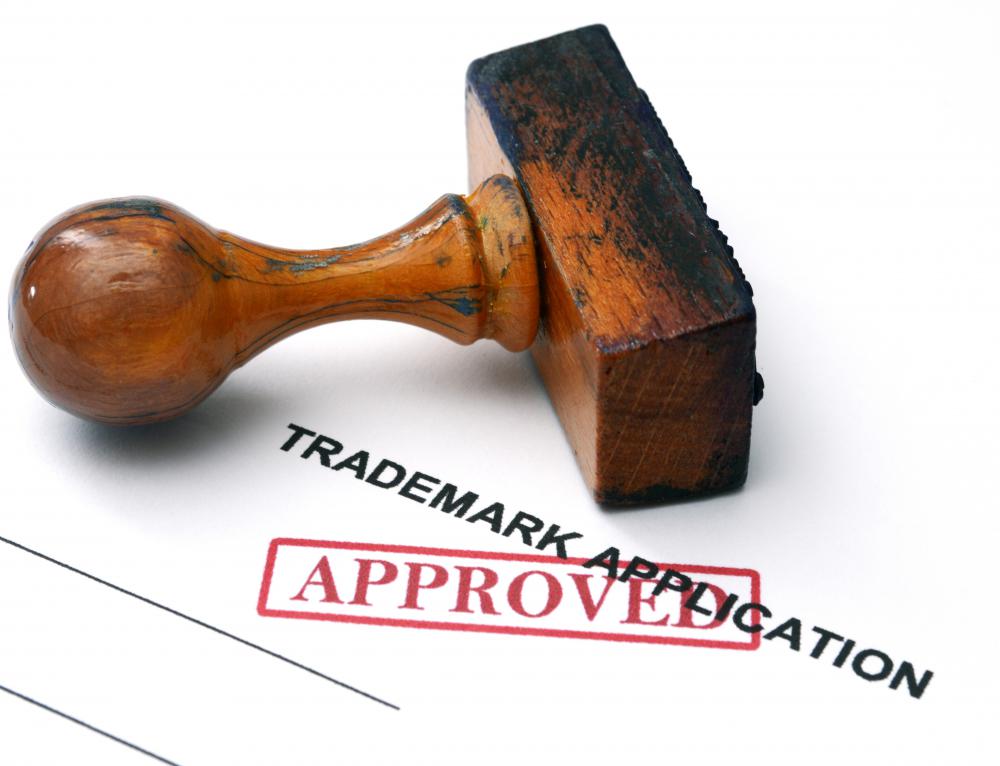At WiseGEEK, we're committed to delivering accurate, trustworthy information. Our expert-authored content is rigorously fact-checked and sourced from credible authorities. Discover how we uphold the highest standards in providing you with reliable knowledge.
How do I Trademark a Name?
Trademarking a name is an important way to protect the energy and time you have put into establishing the name’s value. Trademarks are intellectual property rights that grant a person or business the exclusive use of a certain word, phrase, or image in conjunction with the sale of goods or services. Depending on jurisdiction, some trademarks are presumed to attach with use, while others must be applied for and awarded from a national office. Even if a trademark automatically attaches, national registration is still usually the best way to trademark a name. Registration carries with it a presumption of first ownership, and the ability to more effectively enforce exclusive use.
Specific requirements must be met in order to trademark a name, no matter how the trademark is obtained. In most countries, including the United States, Canada, and all members of the European Union, trademarks are reserved exclusively for names, phrases, and images that are used “in commerce.” Use in commerce means that the trademark must be used in conjunction with the sale of goods or services. If a name is not used in commerce, it cannot generally be trademarked.

It is important to keep in mind that trademark law focuses on use, not on specific content. There are no set rules about what sorts of names are eligible for protection. A trademark-eligible name can be a business name or a personal name, so long as it is connected to a definable market. When you trademark a name, you do not gain exclusive rights to use that name in all circumstances. You only gain the right to use that name in connection with the business to which it is attached.
In the United States, trademark rights generally automatically attach to a name that is used in an insulated market. As such, the simplest way to trademark a name, at least in the U.S., is to be the first one to use that name in a community to sell something specific. The owner of a U.S. trademark established by use may append the trademark symbol, &trad;, to the trademarked name. The ® symbol, however, is reserved for federally registered trademarks.
Trademarks established by use carry only local weight. A use-based trademark can prohibit someone else from using your trademarked name to sell a similar thing in your community, but it will not prohibit someone from using your name somewhere else, either nationally, in another state, or in another country. If you trademark a name by use only, it can be difficult to enforce your mark. If you have invested a lot of resources into developing your name as a distinctive trademark — particularly if you intend to use that name more widely than your home community — you should pursue national registration.
When you trademark a name at a national level, you are essentially registering your use of that name with a country’s trademark office, and applying for rights of exclusive use throughout the country. In the United States, national trademarks are granted by the Patent and Trademark Office. Similar offices exist in almost every country of the world.
The specific requirements for obtaining national registration vary by country, but usually an applicant must prove that his use of the name is exclusive, original, and does not conflict with other names already registered. National registration enables a trademark owner to use the trademarked name in a broad market, and to stop others from using that name for a similar purpose. The nuances of national registration can be complicated. Individuals can apply for national registration independently, but many people elect to trademark a name with the help of a trademark lawyer who knows the nuances of the local registration system, and who can advise the owner on the strength of his marks and likelihood of success.
AS FEATURED ON:
AS FEATURED ON:











Discuss this Article
Post your comments